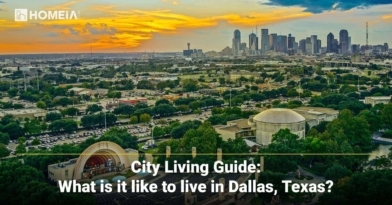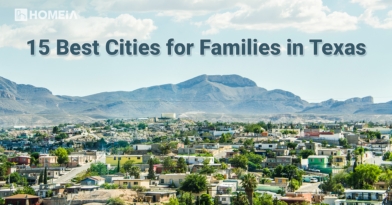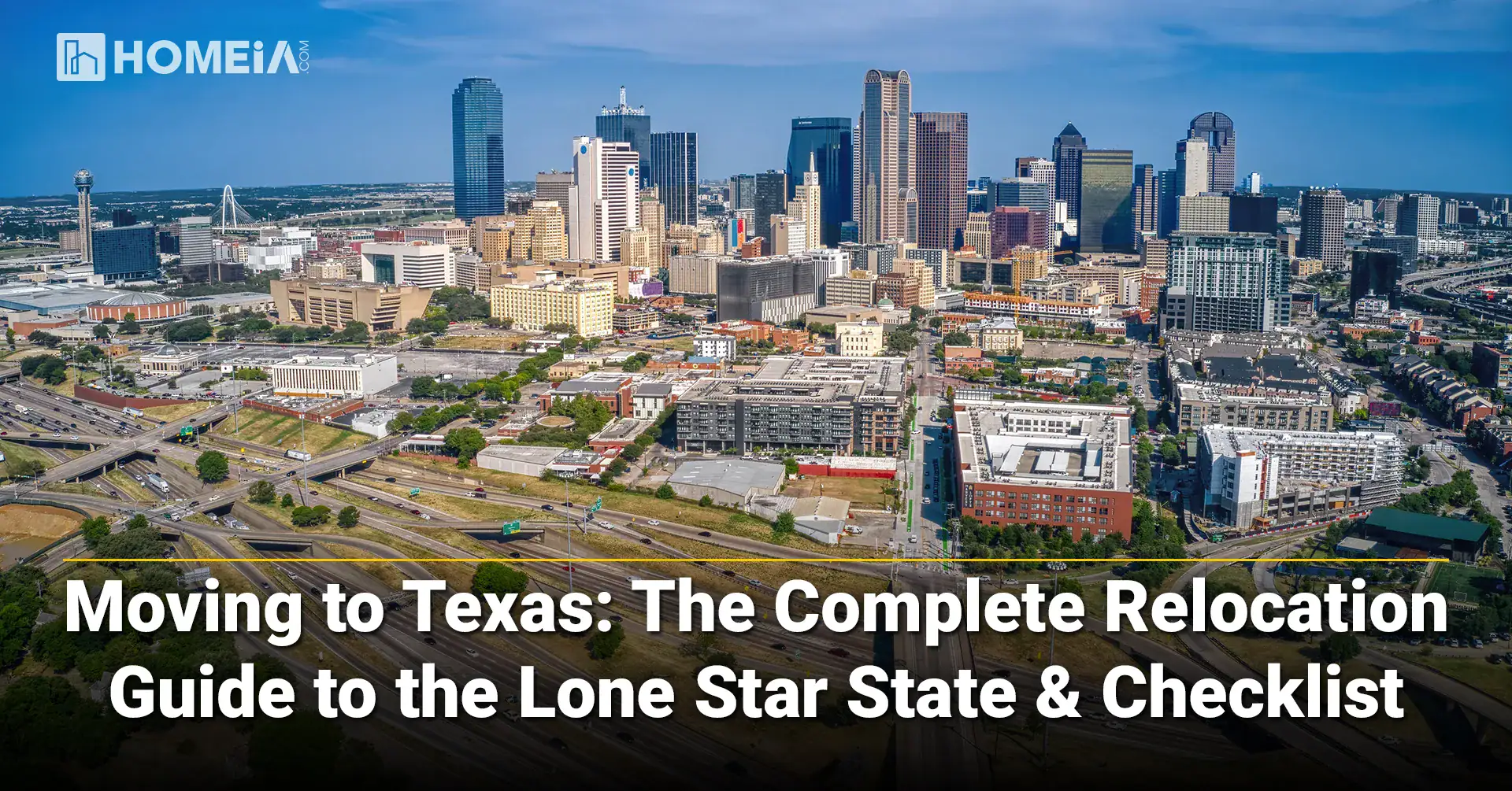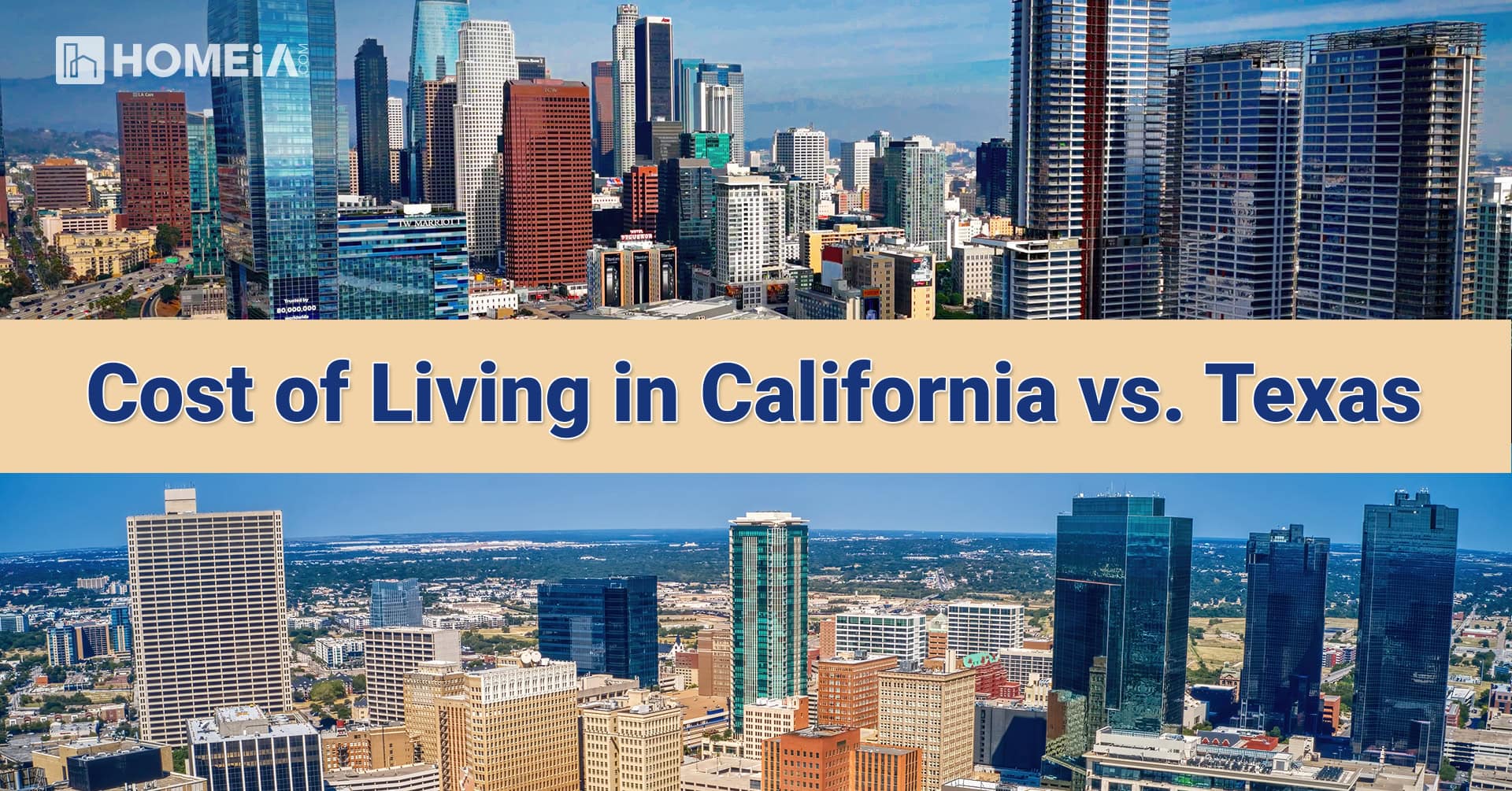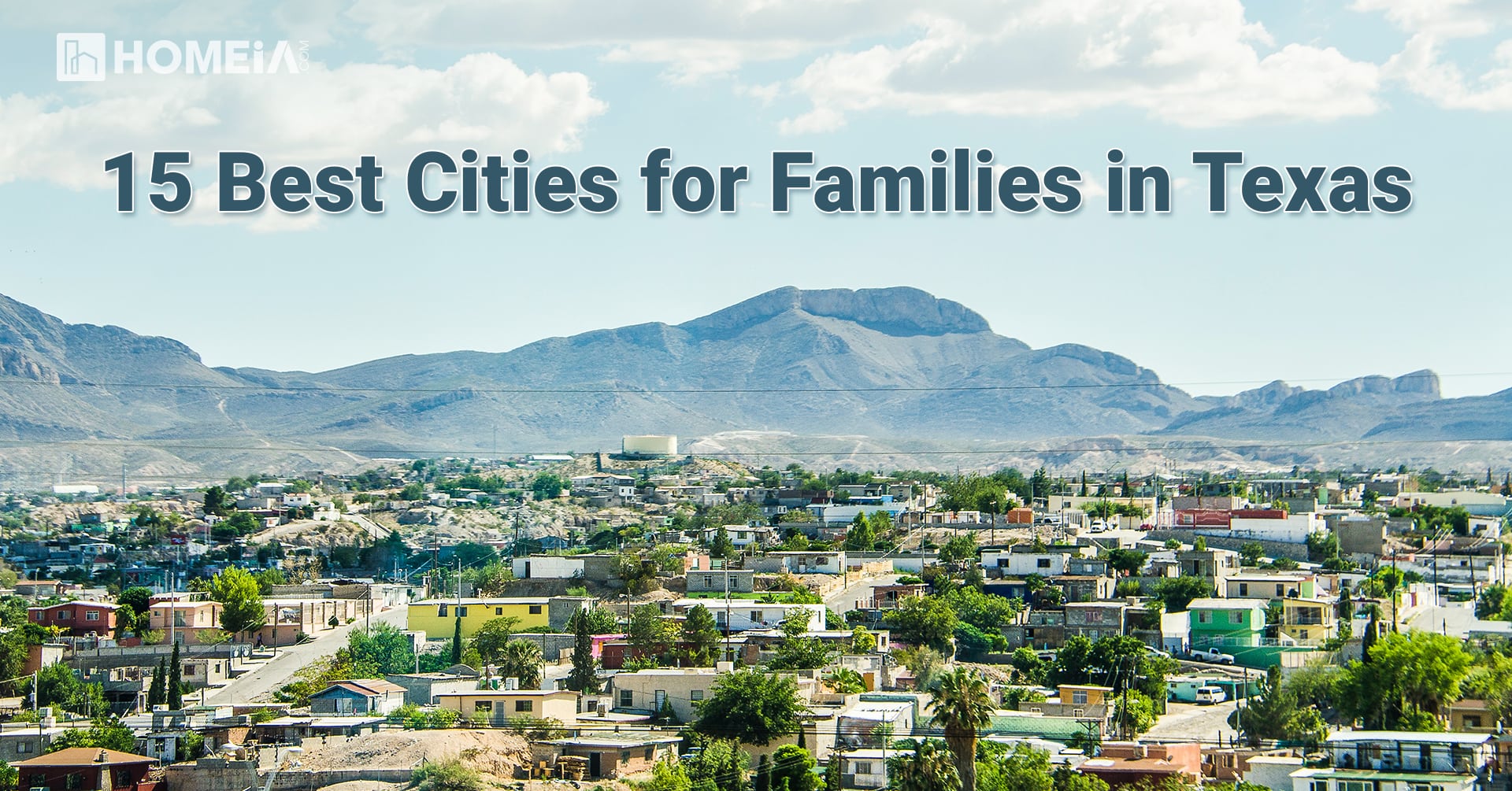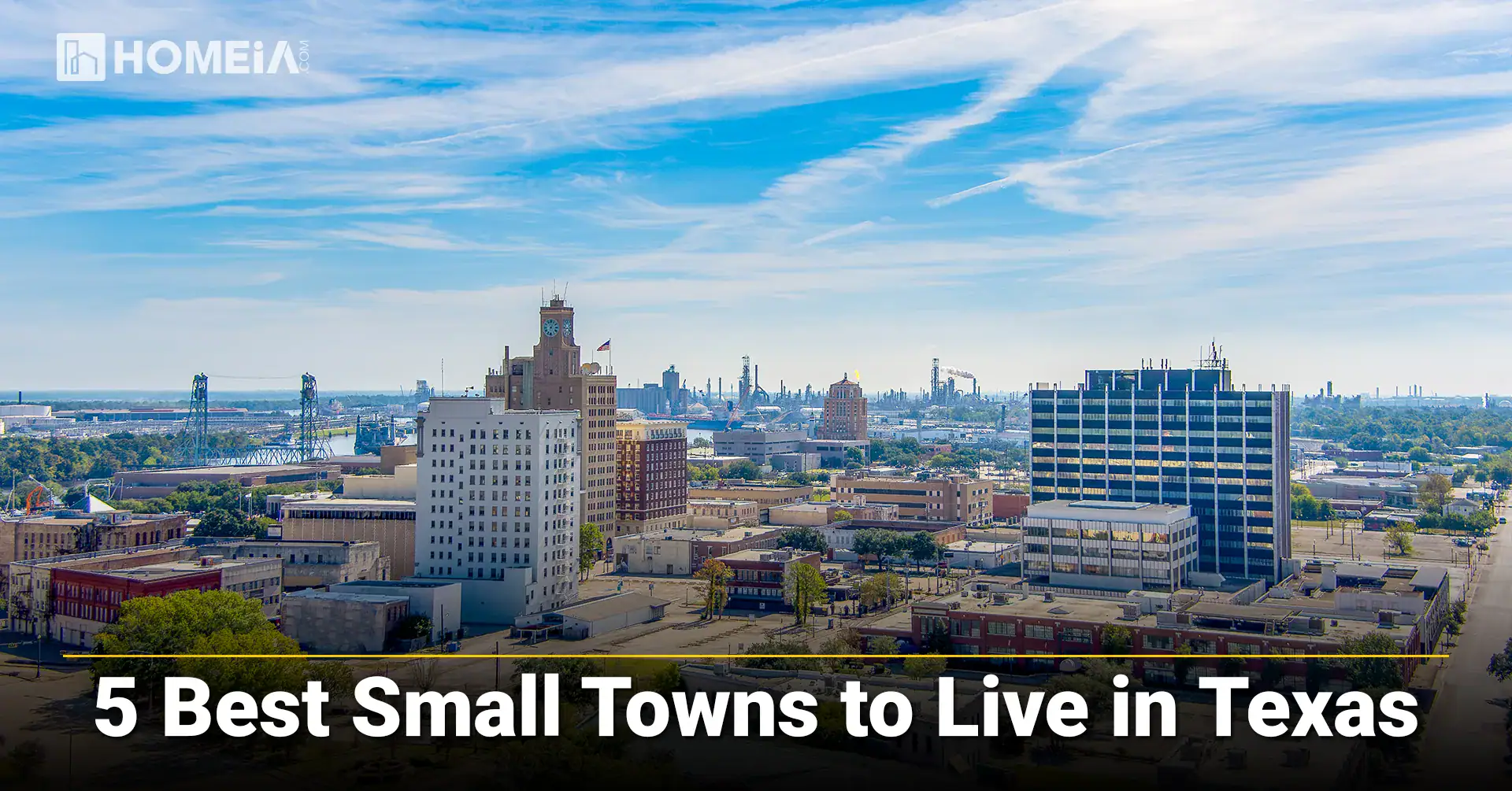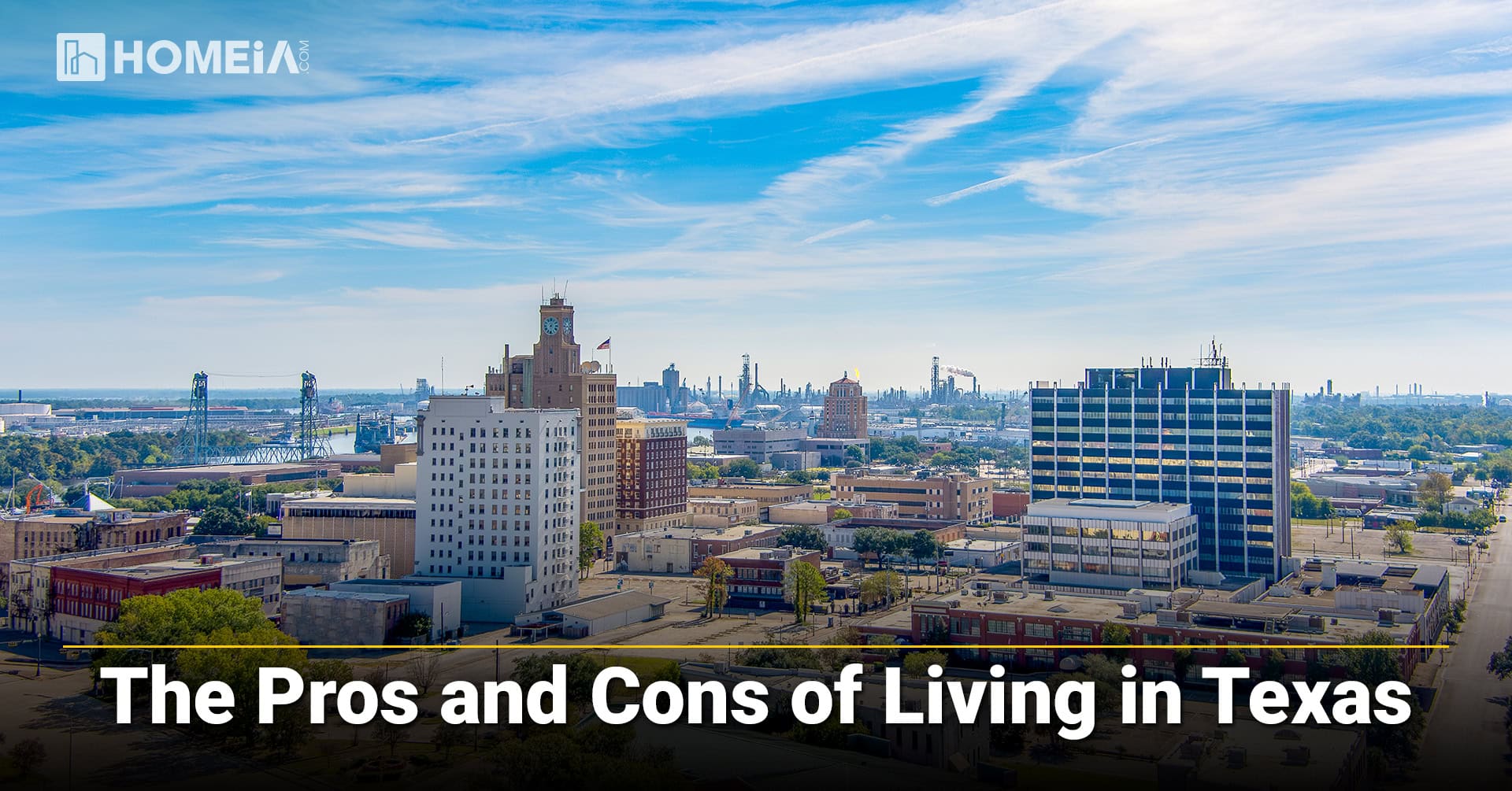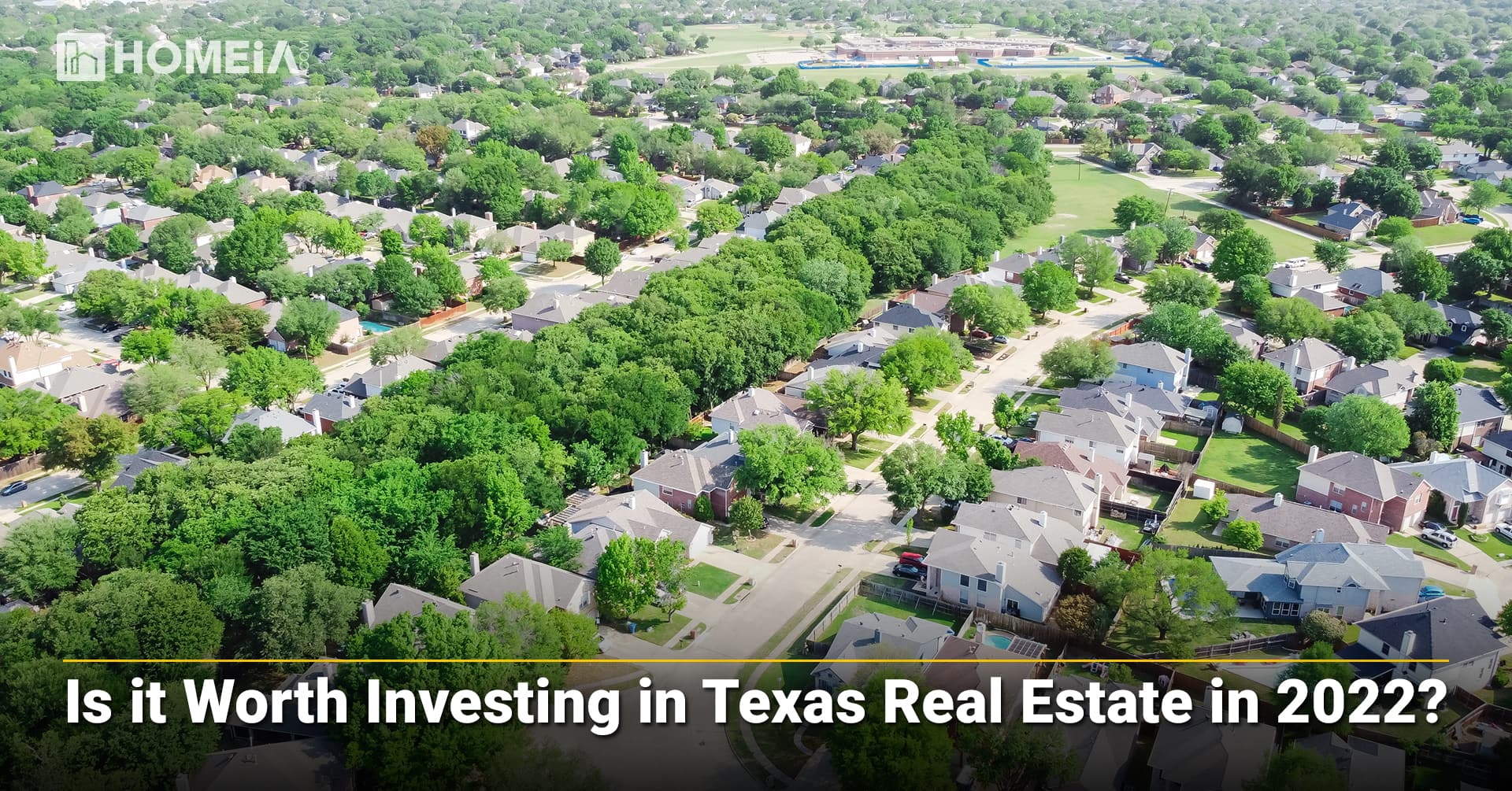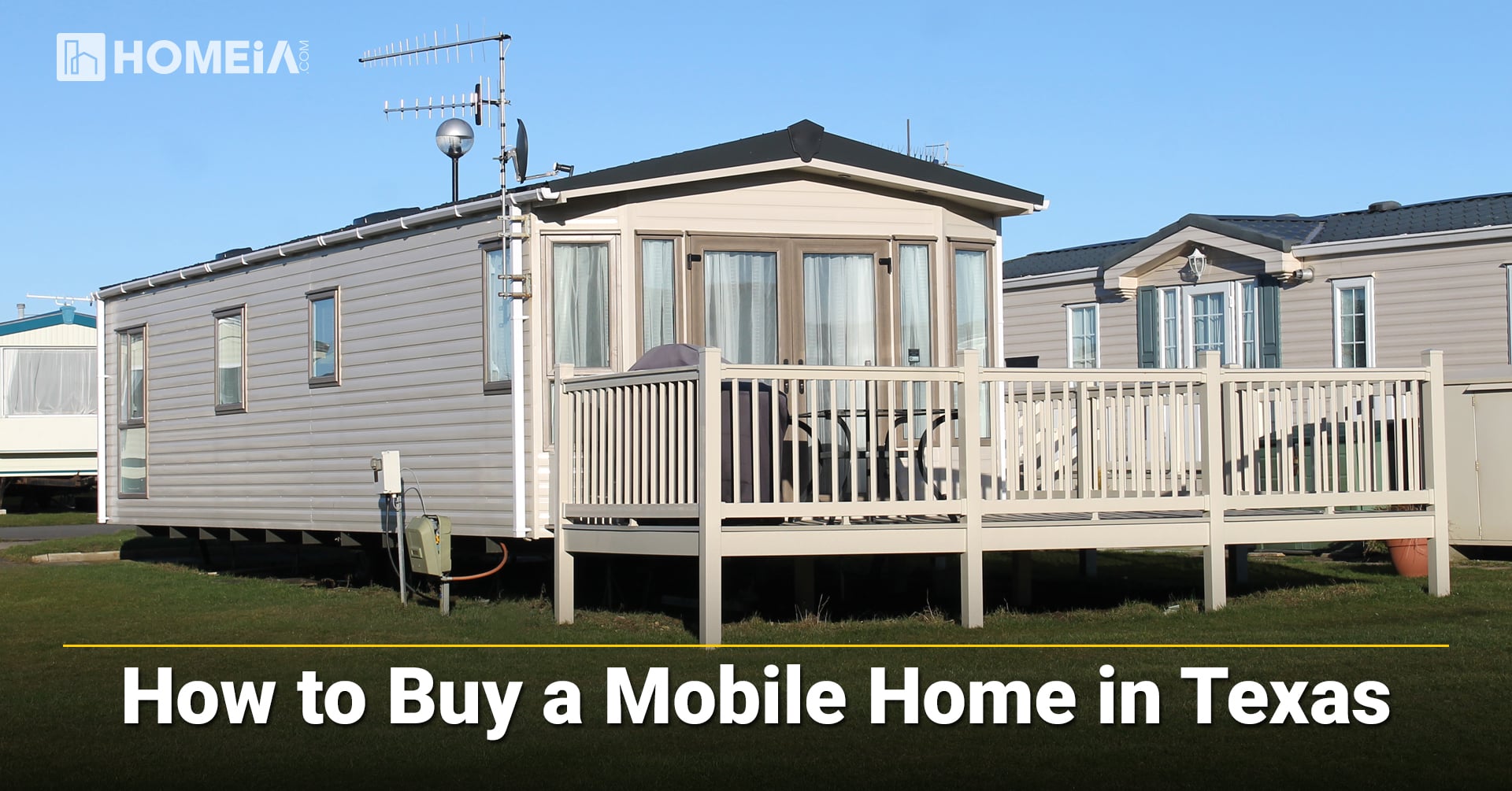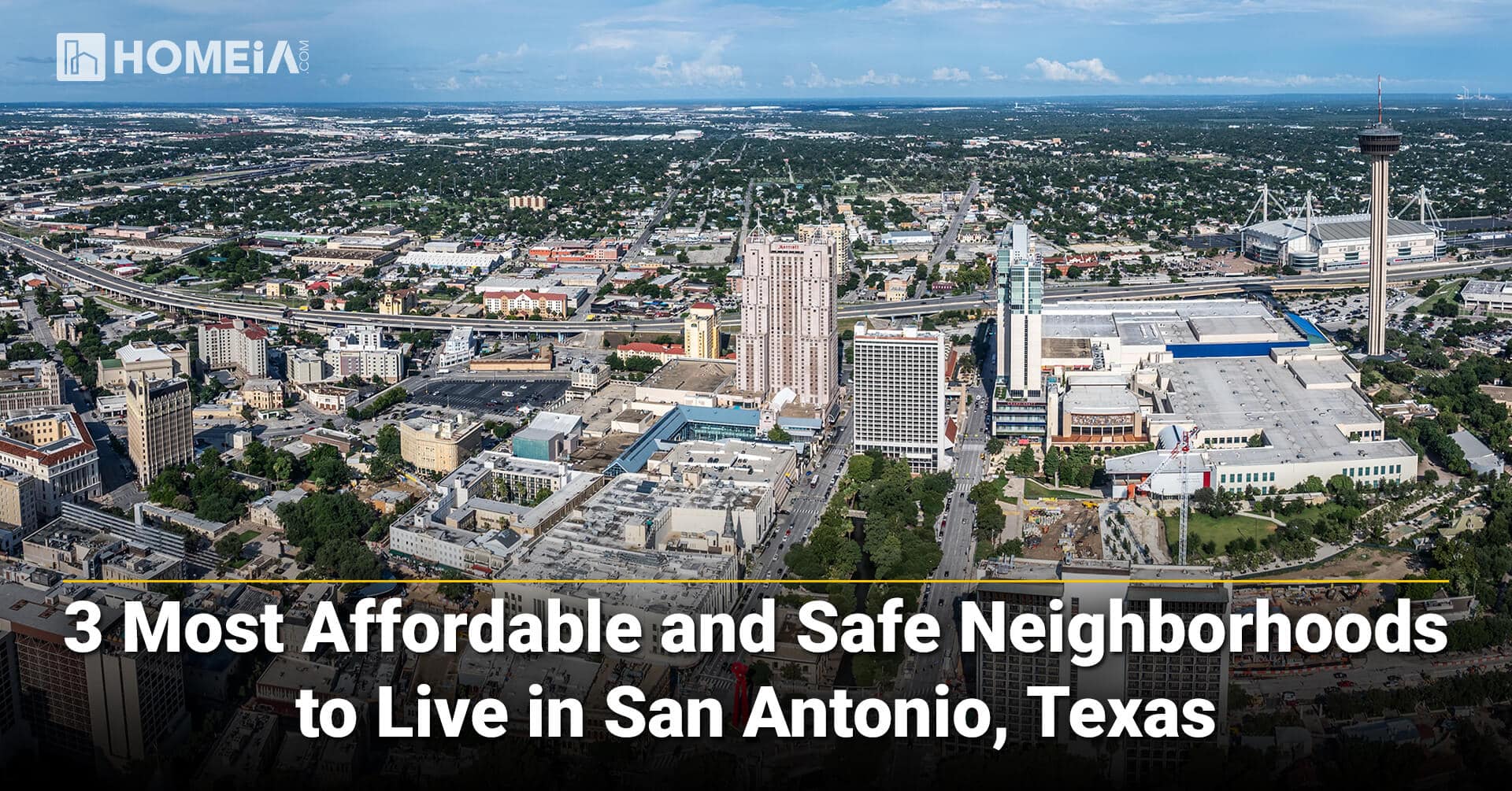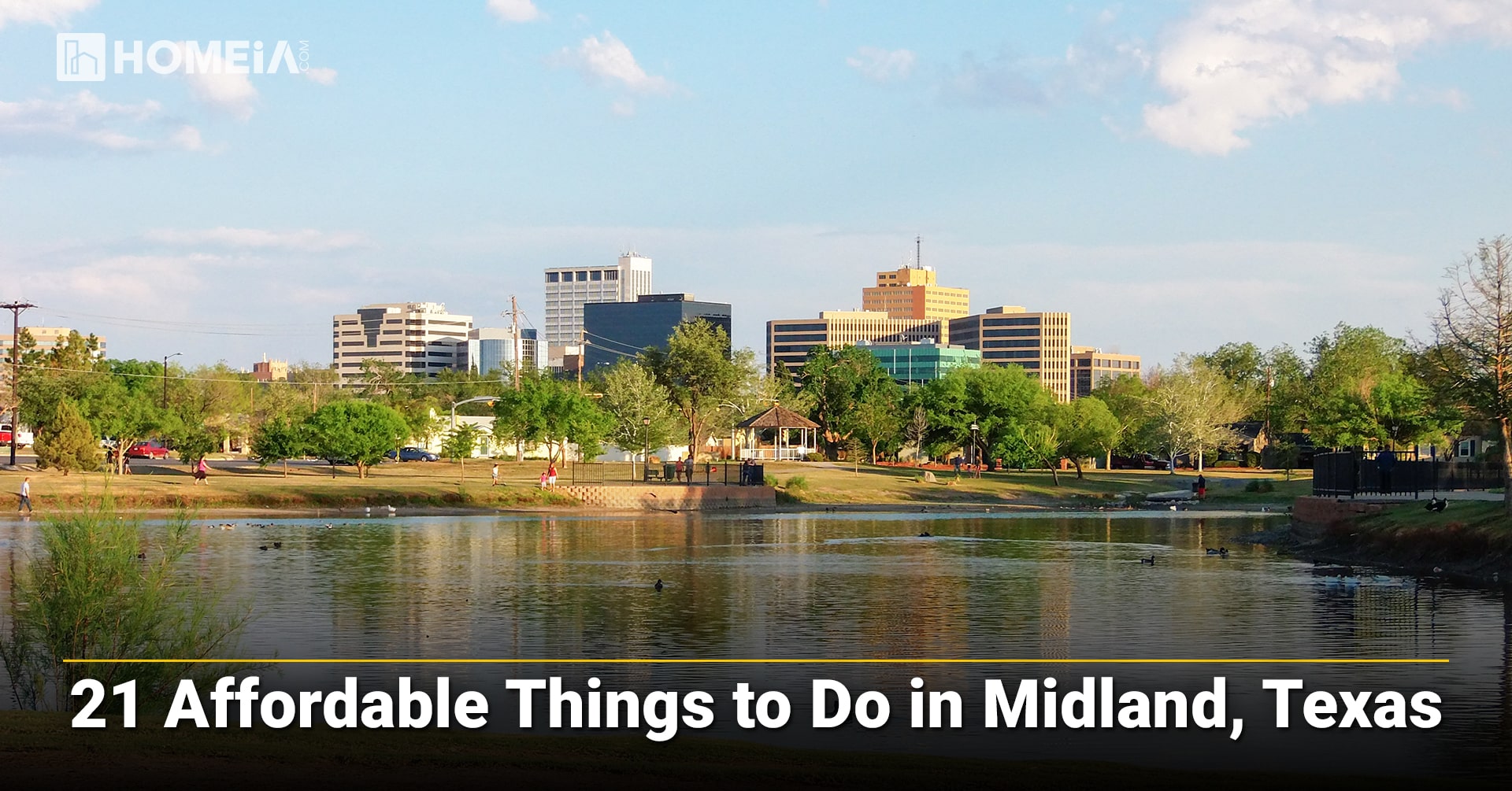Living in Texas
Local Editor(s)

Table of Contents:
- The Complete Guide to Cost of Living and Lifestyle
- 1. Texas Housing Costs: Affordable Options Statewide
- 2. Texas Tax Structure: No State Income Tax Advantage
- 3. Daily Living Expenses in Texas
- 4. Family Life in Texas: Excellent Educational Opportunities
- 5. Texas Transportation: Car-Friendly Infrastructure
- 6. Texas Job Market and Income Potential
- 7. Cost of Living Comparison: Texas vs. Other States
- 8. Texas Lifestyle: Year-Round Opportunities
- 9. Best Places to Live in Texas for Different Needs
- 10. More About The Lone Star State…
- Frequently Asked Questions About Living in Texas
The Complete Guide to Cost of Living and Lifestyle
Texas living offers exceptional value with no state income tax, diverse job opportunities, and warm climate year-round. The Lone Star State attracts everyone from tech professionals to retirees seeking affordability and economic opportunity. This comprehensive Texas cost of living guide covers housing prices, taxes, daily expenses, and lifestyle factors to help you decide if the Lone Star State is your new home.
1. Texas Housing Costs: Affordable Options Statewide
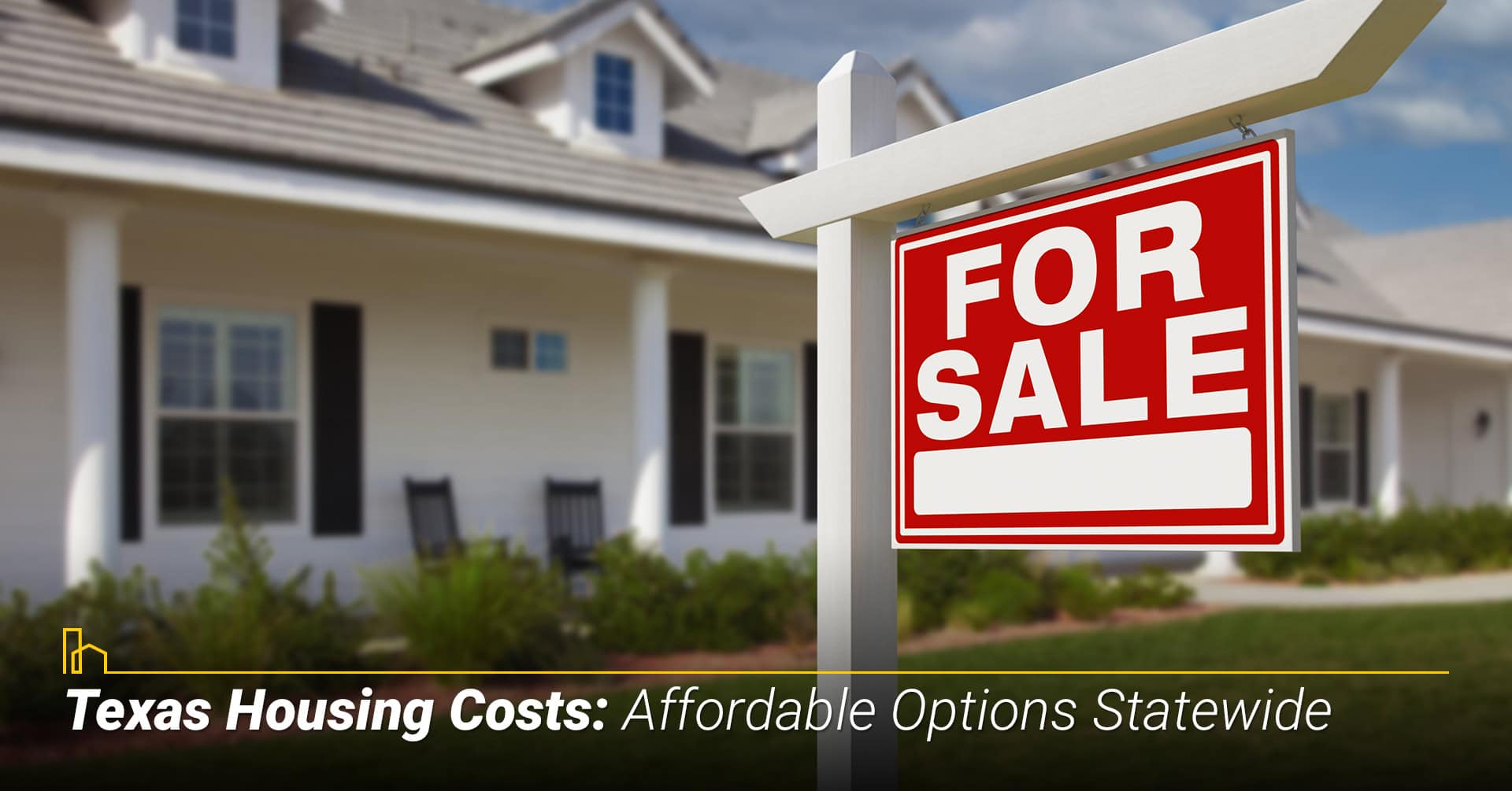
Texas real estate provides broad housing options from urban condos to rural ranch-style homes at prices significantly below coastal averages. Understanding Texas housing market trends will help you find excellent value across diverse communities and inform your decision about moving to the Lone Star State.
A. Major Texas Cities Housing Costs
| City | Median Home Price | 2-Bedroom Rent | 3-Bedroom Rent | HOA Fees |
| Austin | $460,000 | $1,850/month | $2,500-$3,400/month | $200-$400/month |
| Dallas | $390,000 | $1,750/month | $2,300-$3,200/month | $150-$350/month |
| Houston | $350,000 | $1,600/month | $2,200-$2,900/month | $100-$250/month |
| San Antonio | $320,000 | $1,450/month | $2,000-$2,500/month | $80-$200/month |
| El Paso | $260,000 | $1,200/month | $1,600-$2,000/month | $50-$150/month |
B. Texas Housing Strategies and Financial Options
Texas offers excellent financing options including widely accepted FHA (first homebuyers assistance programs) and VA loans providing lower down payments for qualified buyers. Veterans benefit from VA loan programs with zero down payment requirements and competitive rates. The Texas Homestead Exemption also reduces property taxes for owner-occupants, creating annual savings of thousands of dollars depending on home value.
Smart buyers explore down payment assistance programs through local municipalities or the Texas Department of Housing. Programs like MyFirstTexasHome provide below-market interest rates for both first-time buyers and veterans. Consider areas just outside major metros like Cedar Park near Austin or The Woodlands near Houston for better value while maintaining reasonable commute access.
Monitor new development zones in rapidly growing areas such as North Texas suburbs or Austin’s eastern corridors for potential appreciation and improved infrastructure. Texas’s annual population growth of over 350,000 drives consistent housing demand, making strategic location choices crucial for both affordability and future property value. Many cities in Texas offer new housing or apartment complexes as well as older, cared for properties.
Moving to Texas: THE Complete Relocation Guide to the Lone Star State and Checklist
Moving to Texas? This all-in-one guide and relocation checklist covers cost of living, job opportunities, moving timelines, and the best cities to live. Whether you’re headed to Austin, Dallas-Fort Worth, Houston, or San Antonio, we’ll help you make an informed, confident move to the Lone Star State—y’all ready?…
2. Texas Tax Structure: No State Income Tax Advantage
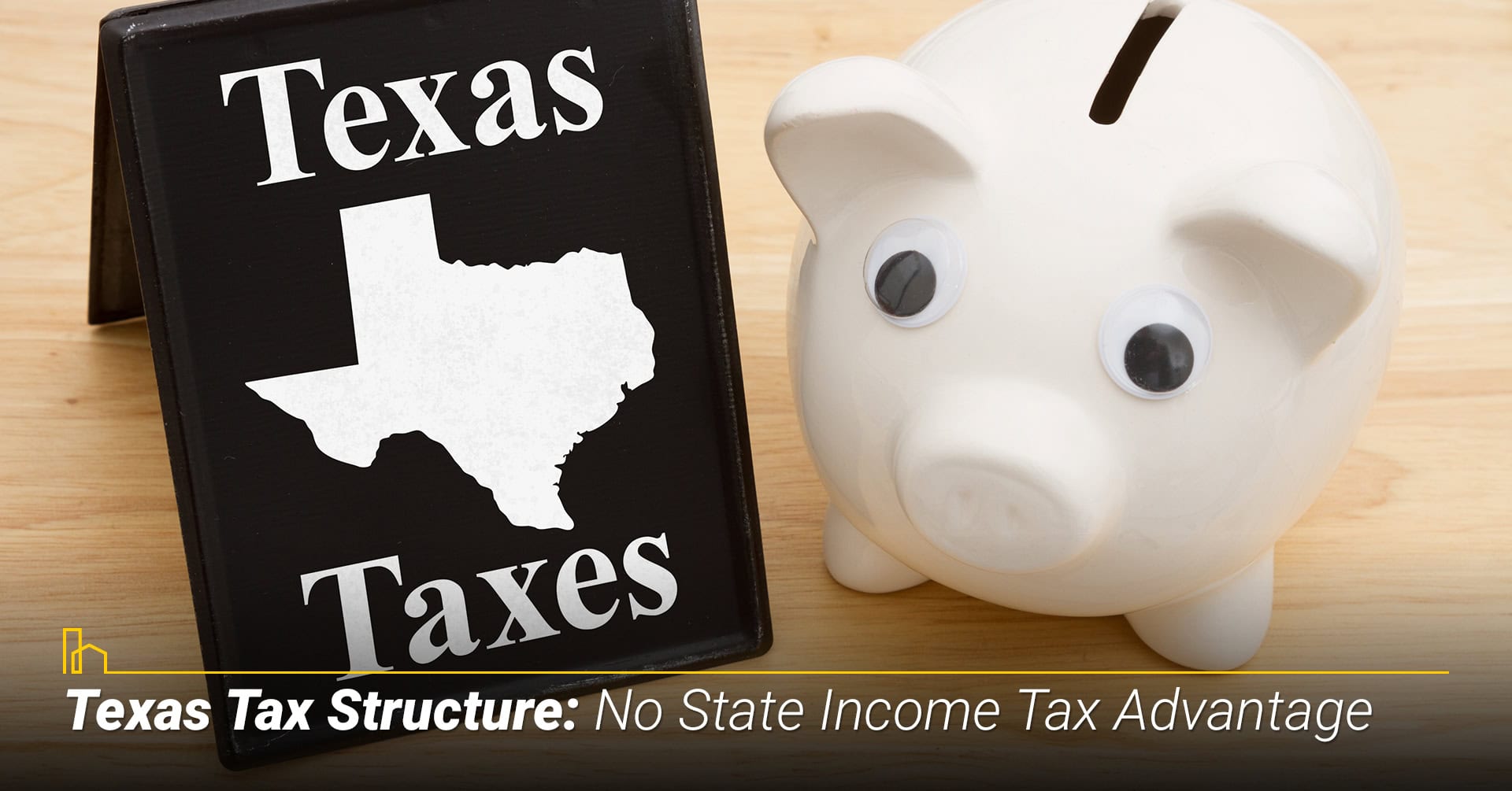
A. Texas State Taxes Overview
Texas has zero state income tax, allowing residents to keep more of their earnings, though this advantage is partially offset by higher property and sales taxes. For a household earning $150,000 annually, the tax saving compared to California could exceed $15,000 per year, significantly impacting disposable income and retirement savings potential.
Sales tax averages 8.2% statewide with local variations reaching up to 8.25%. Texas, however, does not tax groceries, prescription medications, or most services, keeping essential costs manageable. Property tax rates average 1.60%, higher than many states but offset by no income tax burden and typically
lower home values compared to coastal markets.
Vehicle registration fees and driver license fees remain relatively low with flat fee structures. Texas also offers favorable business tax structures, making it attractive for entrepreneurs. The state’s tax-friendly environment has contributed to major corporate relocations, bringing jobs and economic growth that benefits residents through increased employment opportunities.
B. Tax Comparison: Texas vs. Other States
| Tax Type | Texas | Arizona | Florida | California |
| Income Tax | 0% | 2.5% | 0% | Up to 13.3% |
| Sales Tax Avg. | 8.2% | 8.4% | 7.0% | 8.82% |
| Property Tax | 1.60% | 0.66% | 0.80% | 0.71% |
| Vehicle Registration | Low flat fee | Moderate | Moderate | High + fees |
The Pros and Cons of Living in Texas
Thinking about relocating? Understanding the pros and cons of living in Texas is essential. With no state income tax, affordable housing, and a booming job market, Texas appeals to many. However, be prepared for hot summers, regional weather extremes, and urban sprawl. Choosing the right city is key to your experience…
3. Daily Living Expenses in Texas
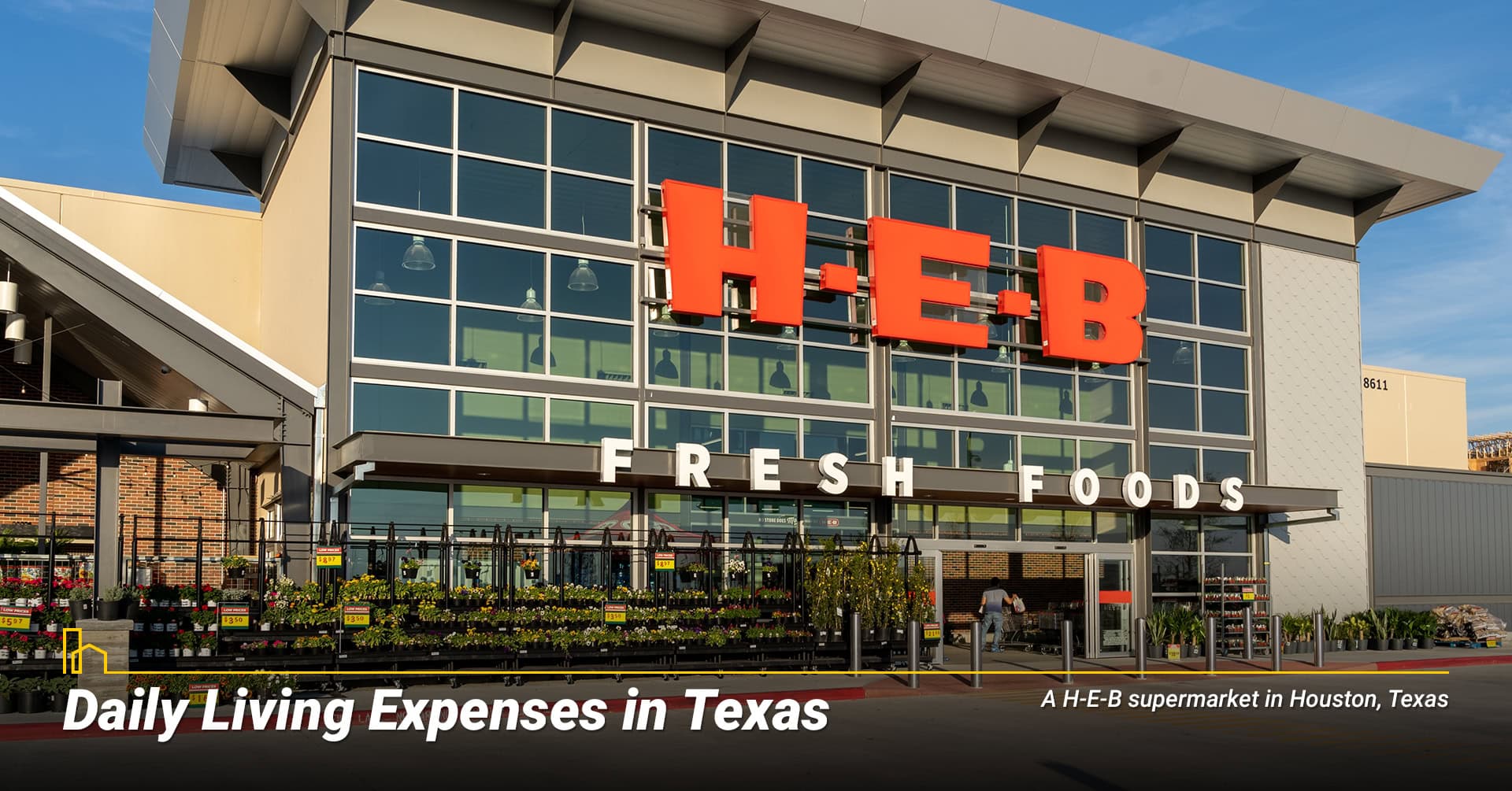
Texas living expenses typically run 7% below national averages, making daily costs manageable across most income levels.
A. Monthly Living Costs Breakdown
| Expense Category | Texas Cost | National Comparison |
| Groceries (per person) | $275-$400/month | ~90.8% of US average |
| Utilities | $180-$220/month | Below average |
| Gasoline | $3.45/gallon | Below national average |
| Healthcare (individual) | $420-$450/month | Competitive rates |
| Dining and Services | Varies by city | Below coastal city rates |
B. Cost-Saving Strategies for Texas Living
Smart Texas residents use deregulated electricity markets to shop for better utility rates, potentially saving 15-30% through competitive pricing and renewable energy options. Many providers offer fixed-rate plans that protect against seasonal price fluctuations.
Grocery costs vary significantly by location, with Texas-based chains like H-E-B often providing better prices than national retailers with local products as well. Warehouse clubs and farmers markets offer additional savings opportunities for budget-conscious families. Chains like Costco are also plentiful throughout the state, allowing you to purchase goods in bulk at lower prices.
Gas prices consistently below national averages help reduce transportation costs. The state’s oil refining capacity creates natural cost advantages year-round. Healthcare premiums remain competitive while maintaining good quality care options, especially in major metropolitan areas.
Dining and services cost 20-40% less than equivalent options in cities like San Francisco or New York, making restaurants and entertainment more affordable for families and professionals.
5 Best Places to Live in Texas: 2025
Texas is famous for its wide, open spaces, booming economy, the unique blend of urban and rural lifestyles, and delicious food. The Lone Star State has it all: rolling hills with breathtaking scenery for miles, vast deserts, and bustling metropolitan areas…
4. Family Life in Texas: Excellent Educational Opportunities
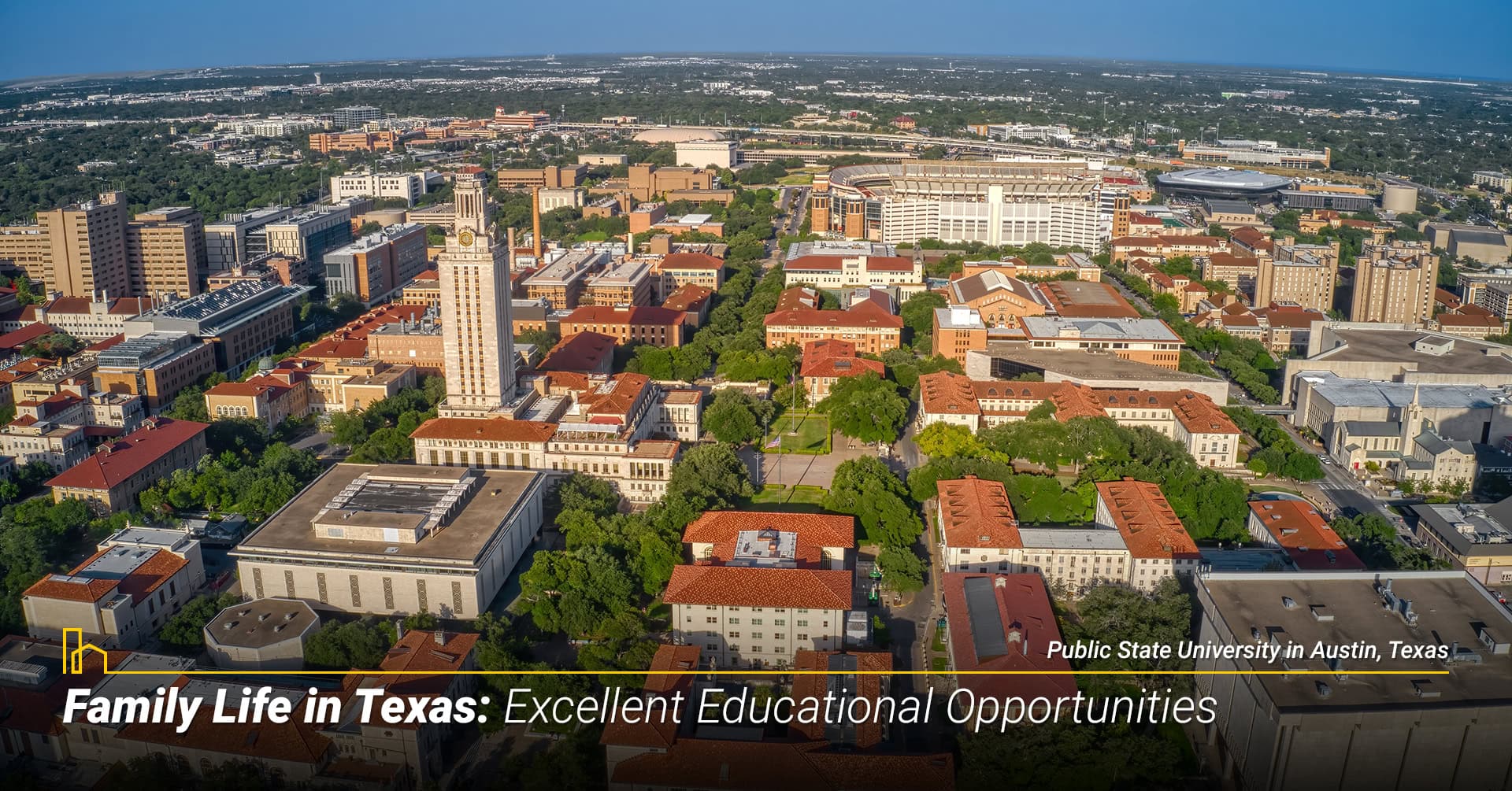
Texas offers outstanding family life with top-rated school districts, affordable childcare, and extensive recreational opportunities.
A. Education Excellence in Texas
Top-ranked school districts including Southlake Carroll, Eanes (Austin), and Katy ISD (Independent School District) consistently rank among the nation’s best, with test scores often exceeding national averages. These districts benefit from high property tax revenues funding advanced STEM programs, arts education, and extracurricular activities.
Texas maintains one of the largest university systems in the country. The University of Texas and Texas A&M University systems provide world-class higher education at affordable in-state tuition rates with both main campuses and satellite campuses throughout the state. Smaller state schools are also scattered within the state. Community colleges offer excellent transfer programs and technical training aligned with Texas’s growing industries.
Public and private school options provide diverse educational choices, from traditional schools to specialized magnet programs in technology, medicine, or arts. Many districts offer dual-language immersion programs, while advanced placement programs prepare students for competitive colleges. Career and technical education create pathways to well-paying careers in healthcare, manufacturing, and energy sectors.
B. Childcare and Family Costs
| Family Expense | Texas Cost | Available Support |
| Childcare | $850-$1,300/month | Programs for low-income families |
| Summer programs | Varies by district | Community-sponsored options |
| Youth sports | $100-$500/season | Extensive league systems |
| After-school care | $200-$600/month | School and private options |
Texas features over 80 state parks and natural sites providing affordable family recreation opportunities year-round. While most parks are free, the national parks do charge a fee for entrance.
Recommended for you
5. Texas Transportation: Car-Friendly Infrastructure
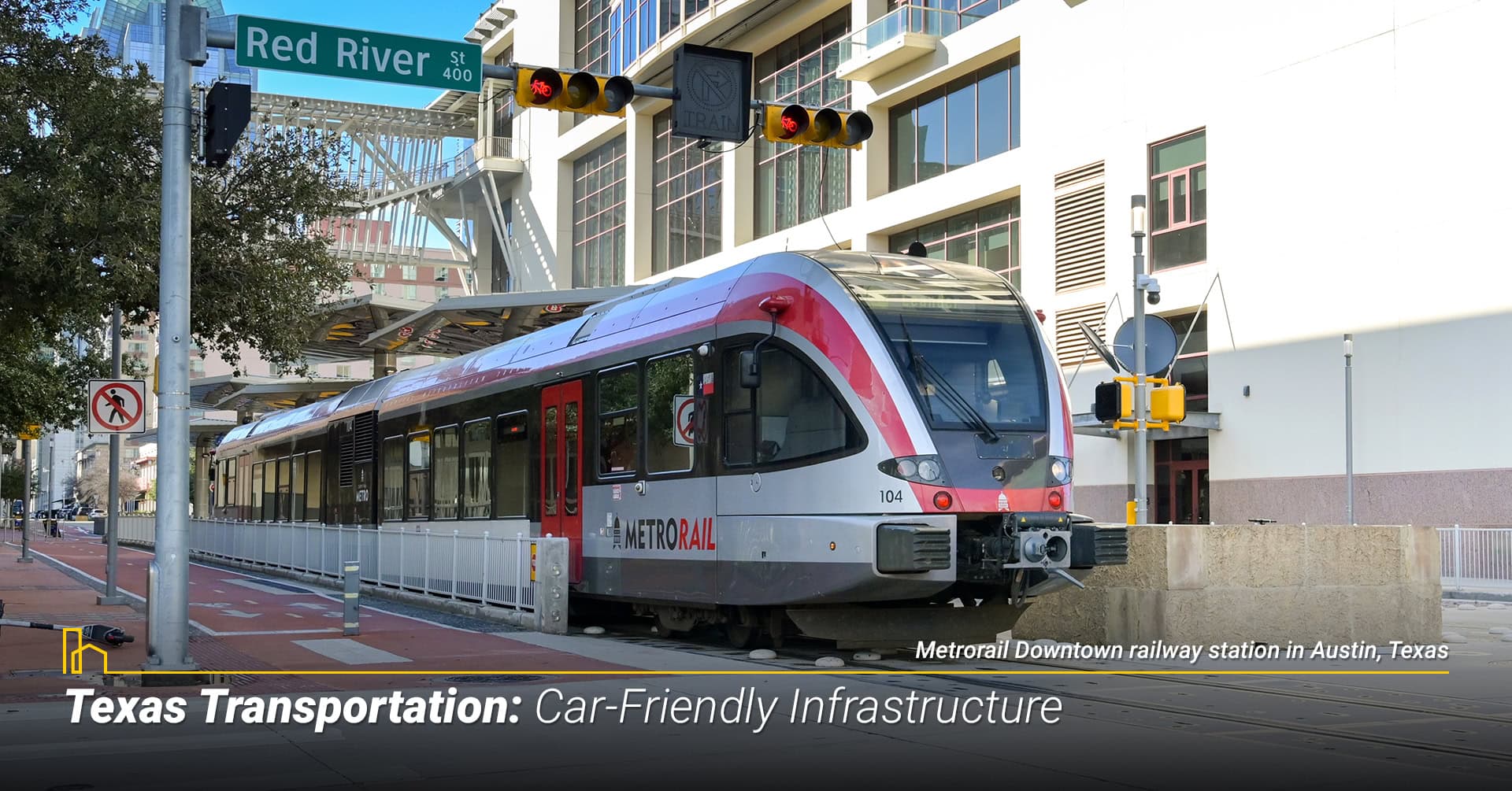
Transportation in Texas centers around personal vehicles with expanding public transit options in major metropolitan areas. Ride share programs are also widely available in the state.
A. Vehicle-Related Expenses
| Transportation Cost | Texas Average | National Comparison |
| Auto Insurance | $1,450/year | Competitive rates |
| Gas Prices | $3.45/gallon | Below national average |
| Vehicle Registration | Low flat fee | Below most states |
| Maintenance | Standard rates | Competitive service costs |
B. Public Transit Options
| Metro Area | Transit System | Monthly Pass | Daily Fare |
| Dallas | Dallas | $96 | $2.50-$5.00 |
| Houston | METRO | $90 | $1.25-$3.00 |
| Austin | CapMetro | $90 | $1.25-$3.50 |
| San Antonio | VIA | $38 | $1.30 |
While Texas cities are traditionally car-dependent, public transit infrastructure continues expanding. Dallas Area Rapid Transit operates one of the longest light rail systems in the United States, connecting downtown with suburban communities and both airports. Houston’s METRO includes bus rapid transit and light rail serving major employment centers.
Austin’s CapMetro recently expanded with new rapid bus lines and is planning rail expansion to accommodate explosive growth. San Antonio’s VIA system provides the most affordable transit in Texas. Typical commute times range from 26-30 minutes, reasonable for major metropolitan regions but requiring strategic location choices.
12 Key Factors to Know When Living in Dallas, Texas
The city is the 9th largest in the United States. Dallas Texas is a little bit country, a little bit rock ’n’ roll, and a whole lot of history, arts, culture and business in the center of the fourth-largest metropolitan statistical area in the United…
6. Texas Job Market and Income Potential
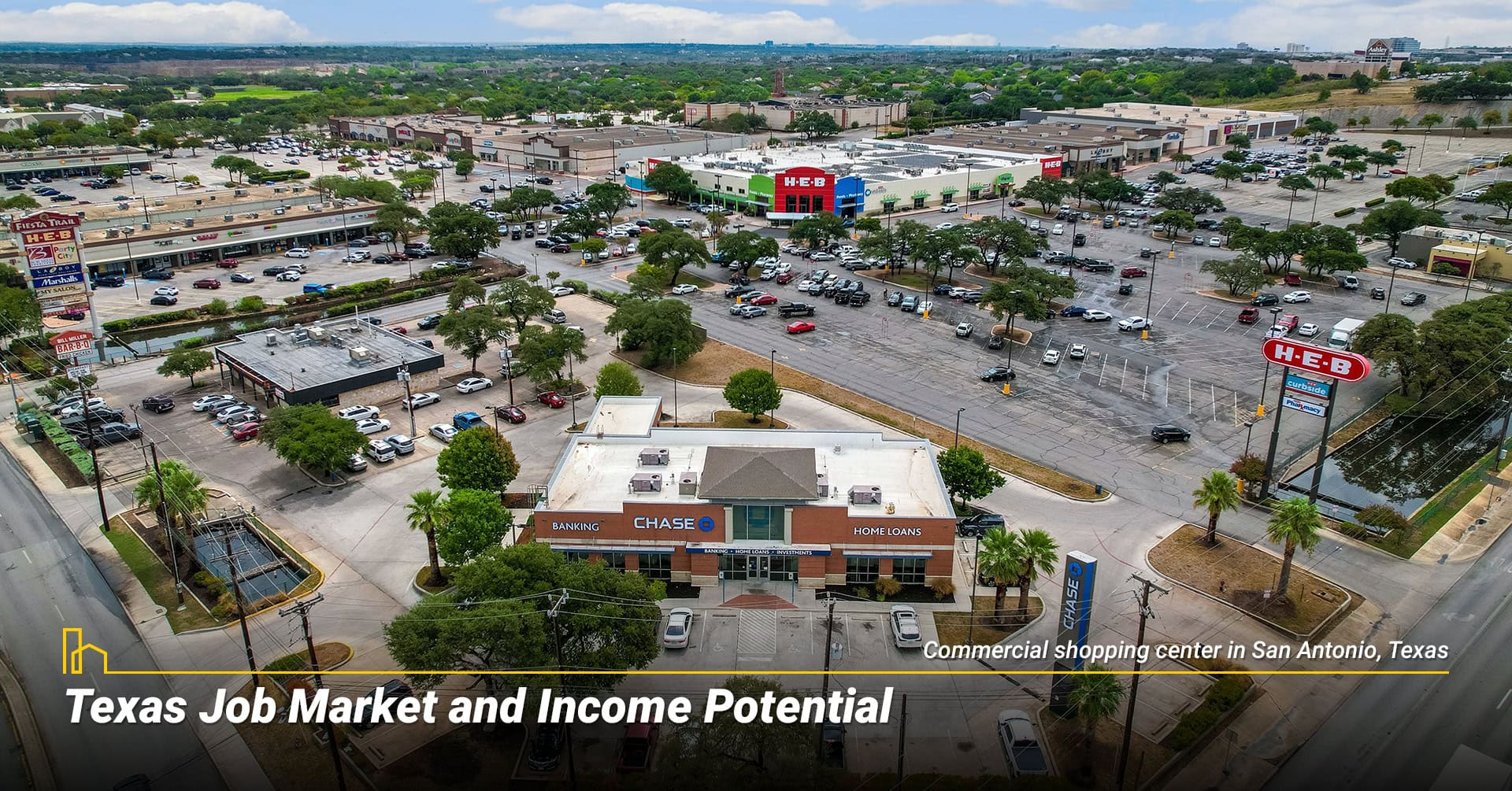
Texas maintains a robust and diverse economy with competitive wages across multiple industries.
A. Income Statistics and Employment
| Income Metric | Texas | National Average |
| Minimum Wage | $7.25/hour | $7.25/hour |
| Median Household Income | $75,000/year | $70,000/year |
| Unemployment Rate | Below national average | Varies |
| Job Growth Rate | Above national average | Varies |
B. Major Texas Employers and Industries
| Industry | Key Companies | Typical Salary Range | Growth Outlook |
| Technology | Dell, Texas Instruments, AT&T | $60,000-$150,000/year | Strong |
| Energy | ExxonMobil, Phillips 66 | $70,000-$140,000/year | Stable |
| Healthcare | Texas Medical Center | $45,000-$120,000/year | Growing |
| Retail/Logistics | Amazon, H-E-B | $35,000-$90,000/year | Steady |
| Aerospace | NASA, Boeing | $65,000-$130,000/year | Stable |
Texas’s economy demonstrates remarkable diversity that provides stability during economic fluctuations. The technology sector continues expanding beyond Austin into Dallas and Houston, driven by major corporate relocations and startup growth. Companies like Oracle, Tesla, and HP Enterprise have established significant operations.
The energy sector has evolved beyond traditional oil and gas into renewable energy leadership. Texas produces more wind energy than any other state and is rapidly expanding solar capacity, creating new career opportunities while maintaining traditional energy sector strength.
Healthcare represents one of Texas’s fastest-growing employment sectors, anchored by institutions like the Texas Medical Center and MD Anderson Cancer Center. Remote work opportunities continue rising due to Texas’s affordability, favorable time zone location, and business-friendly environment.
The 10 Cheapest Places to Live in Texas (updated)
They say everything is bigger in Texas, and for good reason. From some of America’s largest and active metropolitan cities to the host of recreational activities for people of all ages across the state to the many bigger-than-life personalities who call Texas home, Texas has plenty to offer for everyone. here’s the list of 10 lowest cost of living places…
7. Cost of Living Comparison: Texas vs. Other States
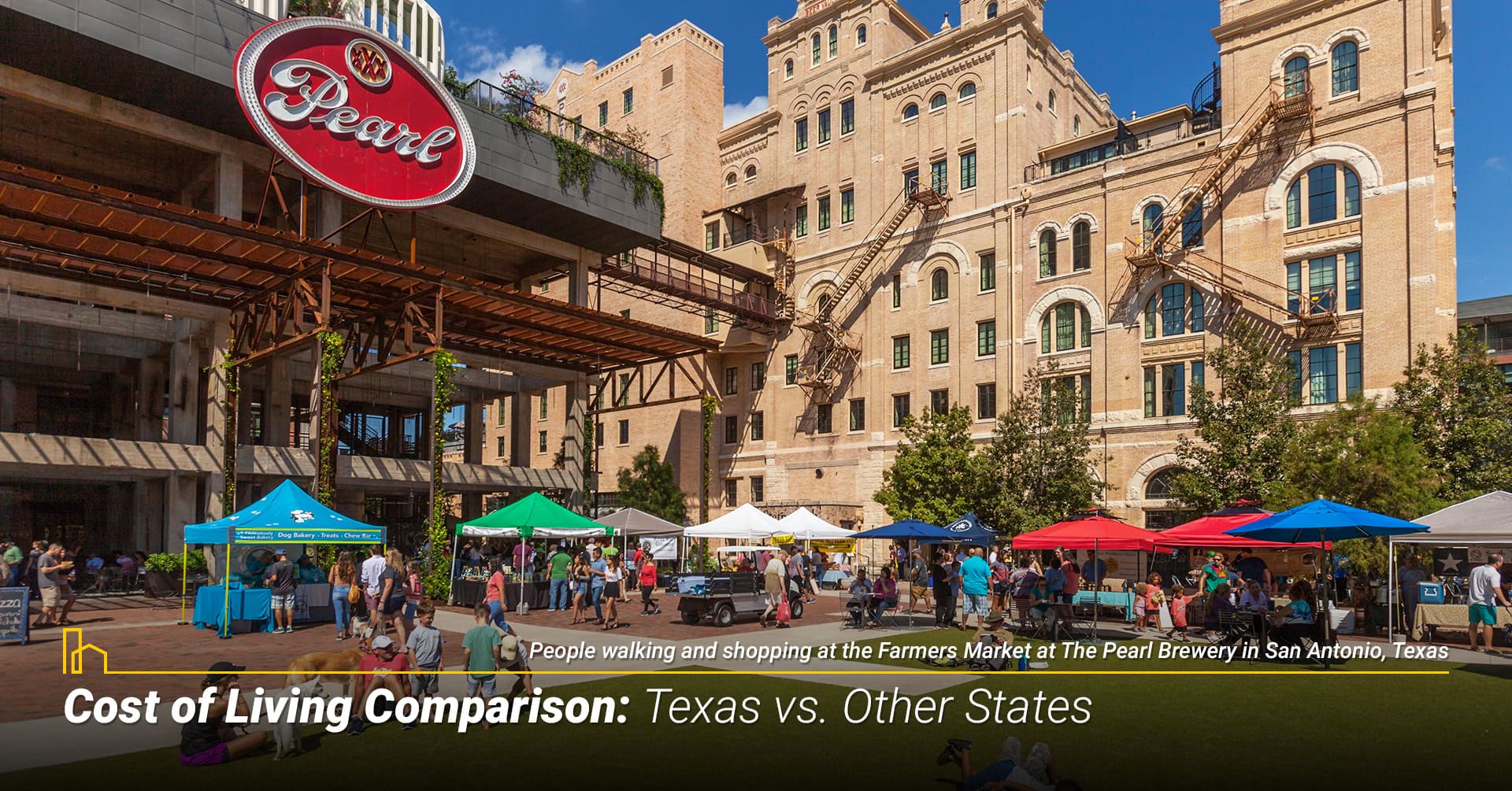
Texas offers excellent value compared to other popular destinations, particularly when compared to high-cost states like California.
| Expense Category | Texas | Arizona | Florida | California |
| Median Home Price | $345,000 | $435,000 | $390,000 | $743,000 |
| Income Tax | 0% | 2.5% | 0% | Up to 13.3% |
| Sales Tax (Avg.) | 8.2% | 8.4% | 7.0% | 8.82% |
| Gas Price/Gallon | $3.45 | $4.15 | $3.60 | $5.15 |
| Commute Time | 26-30 minutes | 25-28 minutes | 24-28 minutes | 30-40 minutes |
8. Texas Lifestyle: Year-Round Opportunities

Texas lifestyle combines affordability with cultural diversity, strong job markets, and year-round outdoor activities, balanced against hot summers and car dependency.
A. Lifestyle Advantages of Texas Living
Texas offers no state income tax, allowing residents to redirect thousands of dollars annually toward home ownership, retirement savings, or family activities. This financial advantage becomes particularly significant for middle and high-income earners.
The state features rich cultural diversity with vibrant communities throughout major cities. Houston ranks among the most ethnically diverse cities in America, creating dynamic food scenes, cultural festivals, and business opportunities. Strong job markets across multiple industries provide career stability and growth opportunities, with Texas’s business-friendly environment encouraging entrepreneurship.
Year-round warm weather enables outdoor recreation and active lifestyles. From Gulf Coast beaches to Hill Country lakes and Big Bend National Park, Texas offers diverse recreational opportunities within driving distance of major metropolitan areas. Affordable housing allows for larger homes with amenities like swimming pools and large yards that would be prohibitively expensive elsewhere.
B. Texas Living Challenges
Hot, humid summers require significant air conditioning costs from June through September. Electricity bills can double during summer peaks, with some residents paying $300-500 monthly for cooling. Living along Texas’s coast may also put you in the path of a hurricane. These seasonal expenses require budget planning and energy-efficient home features as well as certain insurance packages.
High property taxes can offset some savings from no income tax, particularly in desirable areas with top-rated schools. Texas property taxes fund local services but rates can exceed 3% annually in some municipalities when including all local levies.
Car dependency makes vehicle ownership essential for daily activities, requiring multiple vehicles for most families. This increases transportation costs through vehicle payments, insurance, fuel, and maintenance. Some areas experience rapid population growth leading to increased traffic congestion, particularly in Austin and Houston. Ride share programs are widely available, however.
Recommended for you
9. Best Places to Live in Texas for Different Needs
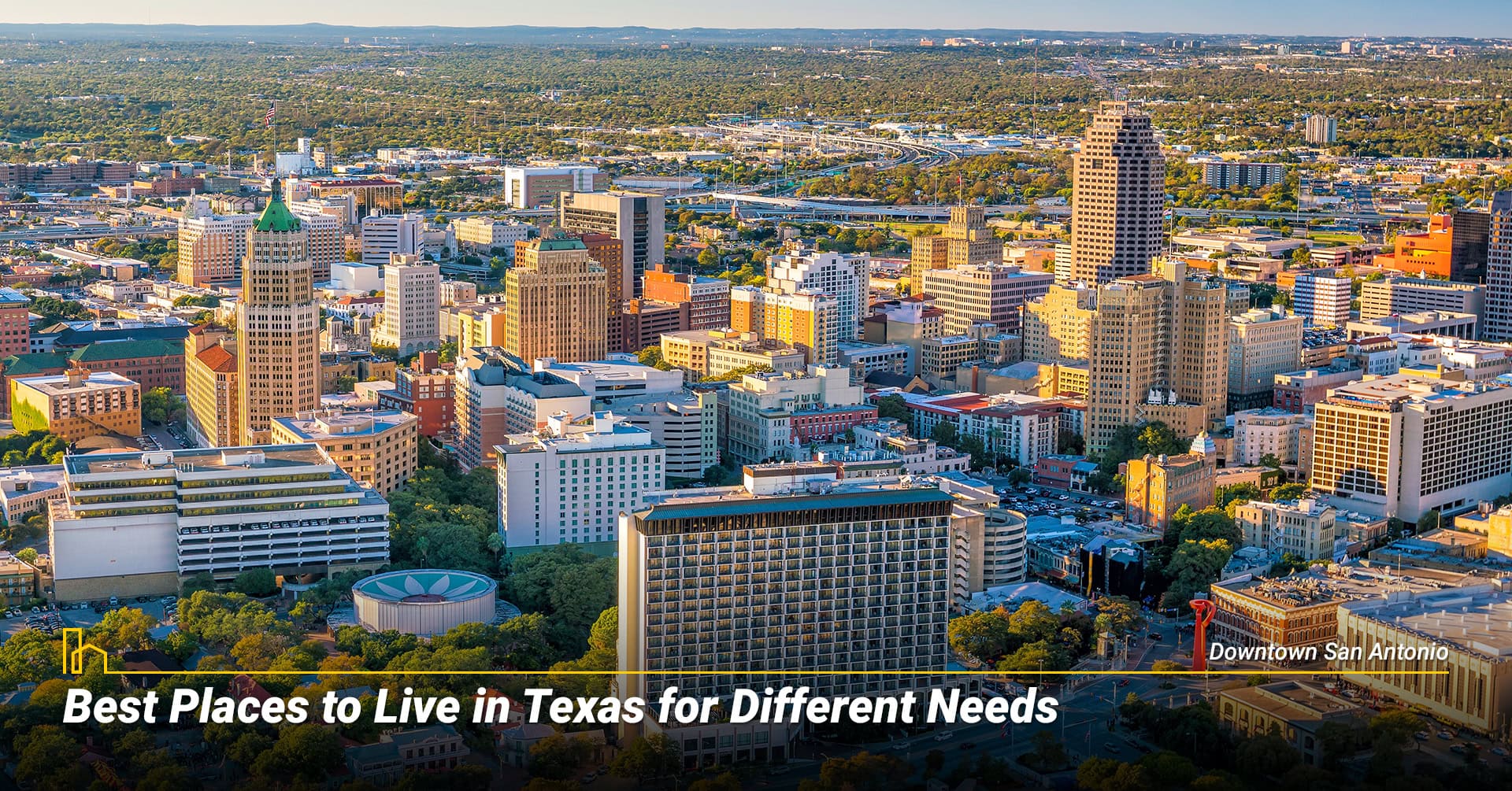
A. Family-Friendly Texas Communities
| Community Type | Best Cities | Median Home Price | Key Benefits |
| Suburban Family | Southlake, Katy, Plano | $400,000-$600,000 | Top schools, safety |
| Affordable Family | San Antonio, El Paso | $260,000-$320,000 | Lower costs, good schools |
| Urban Family | Austin, Dallas | $390,000-$460,000 | Job opportunities, culture |
B. Professional and Retiree Options
Austin provides the highest concentration of technology jobs with major employers like Dell, IBM, and Apple, plus a thriving startup ecosystem. The city’s culture creates a vibrant arts and music scene, while nearby outdoor recreation opportunities abound. Rapid growth, however, has increased housing costs and traffic.
Dallas-Fort Worth offers diverse corporate headquarters including American Airlines, AT&T, and ExxonMobil, creating opportunities across multiple industries. The Metroplex features world-class cultural attractions and excellent business travel connectivity through DFW Airport.
Houston features the renowned Texas Medical Center, the world’s largest medical complex, plus significant energy industry opportunities. The city’s international business connections create diverse career opportunities while maintaining relatively affordable housing.
San Antonio combines affordability with rich history and excellent retirement amenities, including world-class healthcare and cultural attractions like the River Walk. The lower cost of living makes retirement dollars stretch further, while military retirees appreciate the city’s veteran-friendly services.
Conclusion: Making Texas Living Work for You
Texas cost of living is approximately 7% lower than the national average, with housing costs about 8% below average, making it attractive for families, professionals, and retirees seeking value. The combination of no state income tax, diverse job opportunities, and warm climate creates compelling reasons to choose Texas.
Success in Texas depends on choosing the right location for your budget and lifestyle preferences, preparing for hot summers and associated cooling costs, and embracing the car-centric transportation culture. With proper planning and realistic expectations about regional differences, Texas living offers both financial advantages and quality of life benefits.
Whether you’re drawn by Austin’s art and tech scenes, Houston’s energy industry and diverse community, or simply the appeal of keeping more of your paycheck, Texas provides diverse opportunities for building a successful life in the Lone Star State.
The Cost of Living in California vs Texas (Updated)
Both California and Texas have not only the largest populations but the largest habitable landmass of any of the U.S. states. This means there are not a lot of statements that can be made which represent either state in totality. We’ll let you know here the general cost factors to consider when making a decision to relocate to either state…
10. More About The Lone Star State…
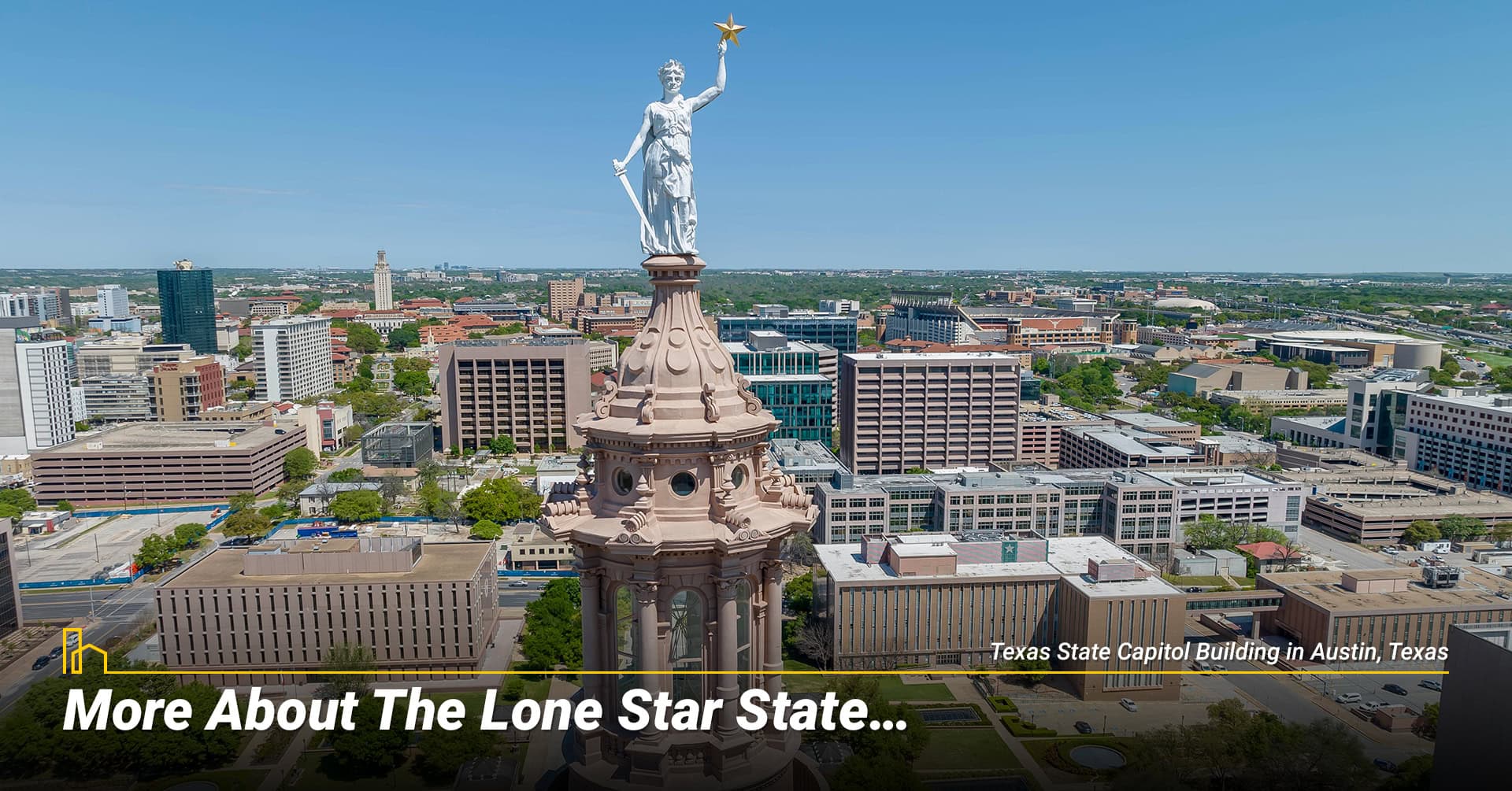
Texas is an expansive south-central U.S. state. Only the state of Alaska has more area than Texas, and California is the only state that is more populous. The Lone Star State borders Mexico along the Rio Grande to the southwest and the Gulf of Mexico to the southeast.
The sheer size of the state lends itself to having a variety of landscapes: mountains, deserts, hill country, plains, prairies, forests, swamps and rivers. Texas has been well established as cattle and cowboy country and is often the setting of blockbuster movies such as Lonesome Dove, No Country for Old Men, Hud and, of course, The Alamo.
In addition to its agricultural base, the state is also a major oil producer and leading exporter. Other key industries are aerospace, energy, biomedical, technology, manufacturing and electronics. As a leader in higher education and medical research, Texas boasts one of the largest economies in the world and is home to a significant number of corporate headquarters.
Texas is a beloved home to around 30 million people, and many northerners become snowbirds each winter as they escape the freezing temperatures, snow and ice for the warmth of their second home. Although its climate is favorable, tornados, tropical storms and hurricanes have caused considerable damage over the years. The phrase “Big as Texas” applies in so many ways. The land area is huge, as is the population count.
15 Best Cities for Families in Texas
There are many employment opportunities throughout the state and many enjoyable communities to call home. We’ve compiled a list of 15 cities that rank high in education, affordability, and safety—areas of interest for many potential homeowners…
The state has enviable natural resources and diverse geological settings. Out in the wide-open spaces, the Big Bend National Park beckons nature lovers, hikers and campers with its mountains, rivers, deserts and canyons. Big Thicket National Preserve showcases the piney woods, bayous and swamps.
Austin is the capital of Texas, and the largest cities are Houston, Dallas and San Antonio. Throughout the state, you’ll find an emphasis on performing arts, music, sports, history, nature, cuisine and diversity. The state has a convenient transportation system, with ports, airports, rail and freeways.
Famous people from Texas include Lyndon B. Johnson, Dwight Eisenhower, George H.W. Bush, George Bush, Carol Burnett, Steve Martin, Tommy Lee Jones, Mary Kay Ash, Howard Hughes, Janis Joplin, Mickey Gilley, Shaquille O’Neal, Dennis Rodman, Nolan Ryan, Willie Nelson and Waylon Jennings. That’s quite a variety!
If you are considering Texas for your home or business, you’ll be happy to learn that the state is considered one of the most business-friendly and collects no state income tax. Yes, Texas is big enough to offer whatever lifestyle you prefer. Housing is available in countless styles and locales.
At HOMEiA, we’ve reviewed local real estate agents to help you find an agent who knows the city, residential housing, business properties, market values and trends. If Texas is your choice, check out HOMEiA’s list of preferred agents who have the credentials, reviews and down-home friendliness to make your transaction a smooth one.
Recommended for you
Frequently Asked Questions About Living in Texas
1. What is the average cost of living in Texas compared to the national average?
Texas cost of living is approximately 7% lower than the national average overall, with housing costs about 8% below average. This makes Texas attractive for families and professionals seeking affordability without sacrificing quality of life.
2. How much income is needed to live comfortably in Texas?
A single adult needs roughly $90,771 annually to live comfortably in Texas, while a family of four requires approximately $204,922 per year. Costs vary significantly between major metros like Austin and smaller cities like El Paso.
3. Which Texas city is most affordable for families and retirees?
San Antonio consistently ranks as the most affordable major Texas city, offering low housing costs, good healthcare access, and family-friendly amenities. El Paso provides even lower costs with a more relaxed pace of life.
4. How does Texas compare to other no-tax states and high-cost states?
Texas offers slightly higher overall costs than Florida but provides more diverse job opportunities and generally lower housing costs outside major metros. Compared to California, Austin is approximately 67% cheaper than San Francisco, making Texas extremely attractive for those relocating from high-cost coastal areas but still wanting to enjoy an active city life.
5. Are there areas significantly cheaper than the Texas average?
Harlingen and other Rio Grande Valley cities run about 17% below state averages and 23% below national averages. Rural East Texas and West Texas also offer significantly lower living costs.
7 Best Neighborhoods in Austin, Texas (updated)
Austin blends quirky charm, vibrant culture, and a spirit of freedom that locals love. With rapid growth and diverse neighborhoods, this guide helps you find the perfect place to call home, based on real local insight and the city’s unique mix of valor, swagger, and welcoming character….
6. What are the biggest monthly expenses for Texas residents?
Housing, utilities, and healthcare typically represent the largest monthly expenses. Air conditioning costs during hot summers can significantly increase utility bills, particularly from June through September.
7. Is Texas good for first-time homebuyers?
Yes, with a median home price of $345,000 and numerous buyer assistance programs. FHA and VA loans are widely accepted, and the Texas Homestead Exemption provides ongoing property tax relief for owner-occupants.
8. How do gas and grocery costs compare nationally?
Gas averages $3.45 per gallon with most places offering prices well-below $3.00 per gallon, consistently below national averages. Groceries run about 90.8% of the US average, though costs vary significantly between urban and rural areas throughout the state.
9. What should I know about healthcare costs in Texas?
Healthcare premiums average $420-$450 monthly for individuals, with annual per-person costs around $8,406. Texas offers competitive healthcare options, particularly in major metropolitan areas with renowned medical centers.
10. What lifestyle advantages does Texas offer residents?
Texas provides no state income tax, affordable housing options, year-round outdoor recreation, diverse cultural communities, strong job markets, and the freedom to enjoy a larger home and higher quality of life compared to coastal states.
10 Unique Tips You Should Know About Buying a Home in Texas
Texas offers diverse and vibrant living experiences, attracting many homebuyers from across the country. If you’re planning to settle in this vast and exciting state, here are 10 unique things you should know about buying a home in Texas…
Local Editor(s)
Moving to Texas: THE Complete Relocation Guide to the Lone Star State and Checklist
Thinking about relocating to Texas? You're joining over 500,000 people who move to the Lone Star State each year, making Texas the #1 destination for interstate migration and out-of-state moves.…
The 10 Best Neighborhoods in San Antonio, Texas
San Antonio, the gem of Texas, warmly welcomes you with its rich history, vibrant culture, and a blend of urban and suburban living that suits every lifestyle. The city's diverse…
Important Things to Know When Buying A House in Texas
Are you on the adventure of buying a home in Texas? You're in for a treat, because everything's bigger in Texas – including the real estate possibilities. This state, known…
Beach Home Buying in Texas: Important Things You Should Know
If you dream of owning a beachfront property along one of America’s beautiful coastlines but are unsure which state you’d like to settle down in, take this as your sign…
The Cost of Living in California vs Texas (Updated)
Texas and California are two of the best-weather states in the U.S., no wonder many people want to know the cost of living in California vs Texas. Here we compiled…
An Ultimate Guide to Moving for Home Buyers and Sellers
The real estate is a booming industry which makes it easy for anyone to earn and mold their professional careers. With perseverance and patience, a career in real estate will…
15 Things People Usually Forget When Moving
Moving can be one of the most stressful events in life. You have a whole lot going on: Boxes need to be packed, utilities transferred, and a whole house organized.…
27 Questions to Ask When Hiring a Moving Company
Hiring a moving company can be pretty daunting. You're entrusting strangers with all your precious belongings, and you want to make sure they’re adequately insured, experienced, and licensed. But how…
Is it Worth Investing in Texas Real Estate in 2025?
Over the past few years, the Texas real estate market has been red hot. Sales have been at all-time highs, and prices have been shooting up. Until recently, many experts would have recommended investing in Texas real estate. However, it…
5 Steps to Find the Best Tiny Homes for Sale in Houston, Texas
When buying a house, generations of people have stuck to the old saying, “bigger is better.” Prospective home buyers save as much money as possible to spring for large suburban homes with extra storage and plenty of space to grow…
21 Affordable Things to Do in Midland, Texas
The state of Texas has become one of the most popular destinations in the United States for people looking to relocate or just take a vacation. The Lone Star State is a vast place, with a diverse array of cities…


 Considering
Considering


 Verified
Verified







